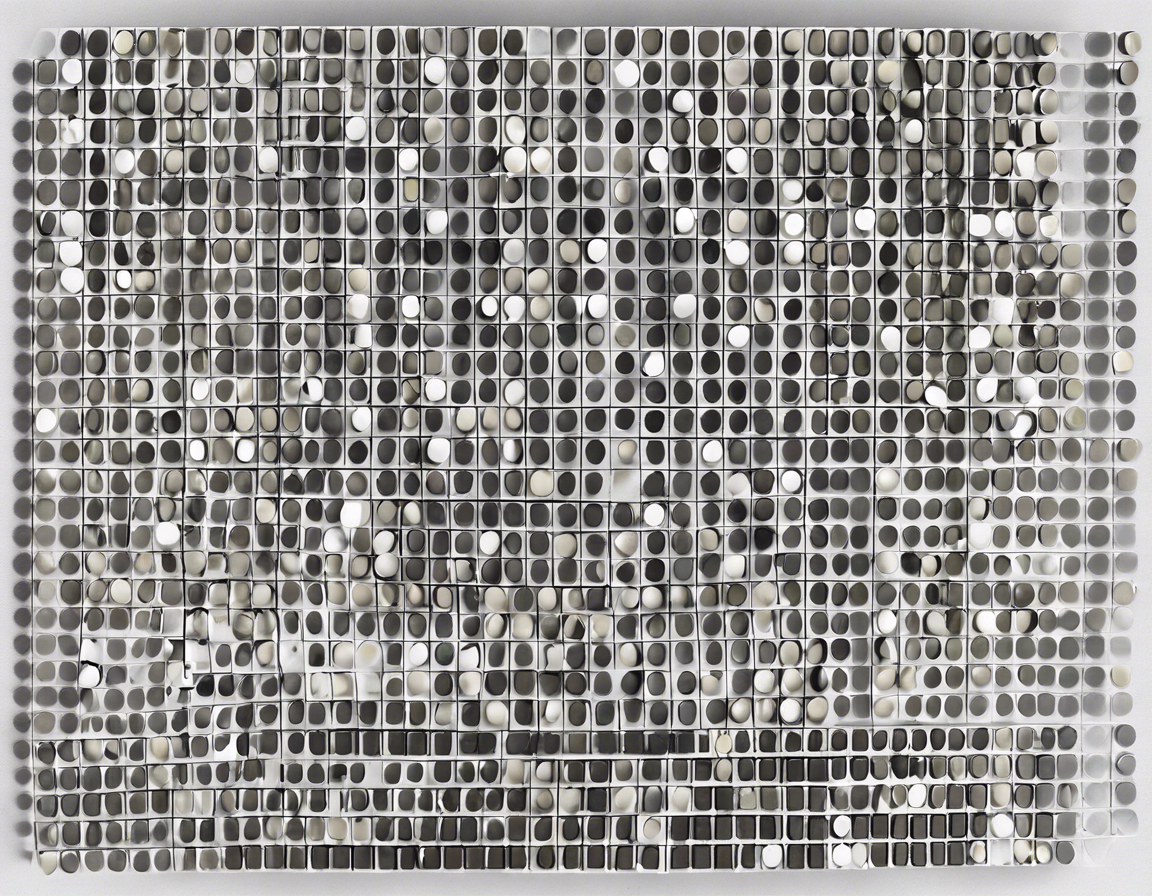Dot matrix printing technology may seem like a relic of the past in today’s era of high-speed laser printers and efficient inkjet variants. However, this rugged and reliable printing method still finds its utility in certain niche applications where its unique characteristics shine. If you have ever used a dot matrix printer, you would have seen the mechanical precision with which tiny dots are placed on paper to form characters and images. In this article, we will delve deeper into the workings of dot matrix printing technology, its applications, advantages, and limitations, providing a comprehensive understanding of this venerable printing method.
Evolution of Dot Matrix Printing
Dot matrix printing technology traces its roots back to the 1920s when teleprinters were first used to transmit text over telegraph lines. The basic concept of forming characters using a matrix of dots emerged during this period and underwent significant refinement over the decades. The first dot matrix impact printer, which resembled a typewriter, was introduced in the 1970s and revolutionized the printing industry with its ability to produce text and graphics.
How Dot Matrix Printing Works
At the core of dot matrix printing is the printhead, which contains a series of pins arranged in a matrix. These pins can be individually controlled to either strike or not strike the ink ribbon against the paper, thus forming dots. By carefully coordinating the movement of the printhead and the timing of the pin strikes, characters and images are created on the paper. The quality of the printout is determined by the resolution of the printer, measured in dots per inch (DPI).
Types of Dot Matrix Printers
There are mainly two types of dot matrix printers: impact and non-impact. Impact dot matrix printers use a printhead with pins that physically strike an ink-soaked ribbon against the paper, leaving behind the desired impression. On the other hand, non-impact dot matrix printers use methods like heat or pressure to transfer the ink onto the paper without any physical contact between the printhead and the paper.
Advantages of Dot Matrix Printing
-
Durability: Dot matrix printers are known for their robust construction, making them suitable for environments where delicate printers may not survive.
-
Carbon Copies: The impact of the pins on an ink ribbon allows dot matrix printers to create multiple copies simultaneously, making them ideal for tasks such as printing receipts or invoices.
-
Low Operating Costs: Dot matrix printers are typically more cost-effective in terms of consumables like ink ribbons compared to modern inkjet or laser printers.
Limitations of Dot Matrix Printing
-
Print Speed: Dot matrix printers are generally slower compared to modern printers due to the time-consuming process of forming characters with tiny dots.
-
Print Quality: The output of dot matrix printers may not match the crispness and clarity offered by laser or inkjet printers, especially for intricate graphics or images.
-
Noise: The impact of the printhead pins against the paper can generate considerable noise, which may not be suitable for quiet working environments.
Applications of Dot Matrix Printing
Dot matrix printers find their niche in various industries and applications where their specific advantages are valued. Some common uses of dot matrix printers include:
-
Invoicing and Receipts: Dot matrix printers are commonly used in retail and banking sectors for printing invoices, receipts, and other transaction documents.
-
Logistics and Shipping: The ability to create multiple copies simultaneously makes dot matrix printers suitable for printing shipping labels and tracking information.
-
Industrial Environments: The durability and reliability of dot matrix printers make them popular in industrial settings where they can withstand harsh conditions.
FAQs about Dot Matrix Printing
1. What is the typical lifespan of a dot matrix printer?
Dot matrix printers are known for their durability, and with proper maintenance, they can last for several years. Some businesses still use dot matrix printers that are a decade or more old.
2. Can dot matrix printers produce color prints?
Most dot matrix printers are monochrome and can only produce prints in black or grayscale. However, there are specialized models that can use colored ribbons for limited color printing.
3. Are dot matrix printers energy-efficient?
Compared to modern inkjet or laser printers, dot matrix printers are relatively less energy-efficient due to their mechanical nature and continuous power consumption during operation.
4. Do dot matrix printers support modern connectivity options like Wi-Fi or Bluetooth?
Most traditional dot matrix printers come with standard connectivity options like parallel or USB ports. However, newer models may offer optional adapters for wireless connectivity.
5. Are dot matrix printers still being manufactured?
While the demand for dot matrix printers has significantly declined, some manufacturers still produce them to cater to specific industries and applications that rely on their unique capabilities.
In conclusion, while dot matrix printing technology may not be as prevalent as it once was, its enduring presence in certain sectors speaks to the reliability and functionality it offers. By understanding the inner workings, advantages, and limitations of dot matrix printers, one can appreciate the role they play in niche applications where durability and cost-effectiveness are paramount. Whether in a warehouse printing shipping labels or in a point-of-sale system generating receipts, dot matrix printers continue to serve a valuable purpose in the diverse landscape of printing technologies.
